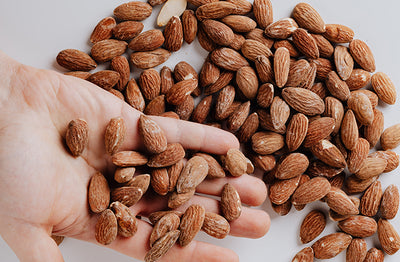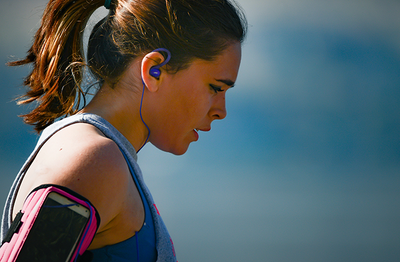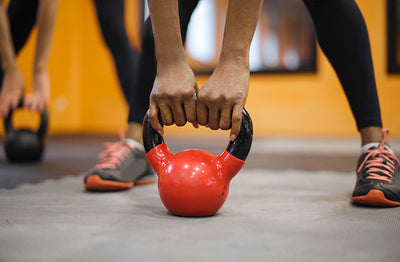So many people dread cardio because they automatically think of those long hours running at a steady pace with nothing to break up the boredom but the music in their headphones, but there’s more to cardio than that. Getting your cardio in doesn’t have to be just about long duration/low intensity, and there are some other options might actually suit your goals better too.
Types of cardio
There are three major types of cardio that we’ll look at, Traditional Cardio, High Intensity Cardio (HIC) and High Intensity Interval Training (HIIT). Each one of them has a different set of benefits, so picking the right one to suit your goals can help you get there much sooner!
Traditional Cardio
This is the classic prolonged low to medium intensity exercise that everyone first thinks of when they hear the word “cardio”. Those long runs around the footy oval where someone would always puke, or the school runs where the PE teacher just wanted to tire out the hyperactive students and couldn't think of anything better.
While a lot of people do pretty much anything they can to avoid it, Traditional cardio is important to have in your exercise routine, especially if you’re trying to grow muscle. Unlike the more intense cardio activities, it doesn’t use up a lot of calories, but it does burn up your fat stores pretty effectively if you do it after a more intense activity (like a weights session).
This is really helpful if you want to get muscle, but stay fairly lean. If you do a more intense sort of cardio, you might be burning the easy to access calories that your muscles need to grow.
Doing Traditional cardio on it’s own will burn some fat, but not as much as mixing it up with something more intense will. Your body just doesn’t get worked hard enough to really get your metabolism fired up, but it is always much better for you than laying on the couch with your blankie.
What are some examples of Traditional Cardio?
Anything that goes for a long time (45 minutes plus) and is kept at a fairly constant pace. It might be walking, light jogging, distance swimming or using a cross trainer just hard enough for a light sweat.
You can usually speak and be understood while doing this, so it’s popular as a group activity where socialising is half the purpose of doing it. Things like a weekly walk with friends aren't as good as a lot of other, more intense activities, but it's a lot better than doing nothing.
Tip:
If you’re doing cardio and an intense exercise on the same day, do the cardio second. This will make your cardio activity target your stored fat for energy, because the more intense activity will have used up the easily accessed energy stores.
High Intensity Cardio (HIC)
This is like traditional cardio, but at a higher intensity. Because of that, it won’t go as long, but your heart rate will be higher. You shouldn’t really be able to keep it up for longer than half an hour.
Your heart is like the celebrity of your muscles, when it tells your body that it needs more resources to grow stronger, it gets them! So by exercising harder, you tell it to get much stronger (and healthier) than when you do low intensity exercises.
Think of it like training your heart’s explosive energy. It doesn’t need much endurance training, it’s been working since day one and won’t stop until you do, but getting better at pumping more blood when you need it most is very important for good heart health.

What are some examples of HIC?
Doing traditional cardio with more intensity is a good example of HIC. Instead of a light jog, you’re running (but not sprinting), sweating and out of breath enough that you’re unable to hold a conversation.
Tip
If you’re trying to lose fat, but still keep your muscles growing, combining traditional cardio with HIC gets them building up as well as burning your stored fat. It’s a bit easier than HIIC, and almost as good if you’re not quite fit enough to really hit the HIIT hard.
High Intensity Interval Training (HIIT)
This is the most exhausting of the three main types of cardio, but it can also be the most rewarding. With HIIT, you have short bursts of maximum effort that alternates with low intensity instead of rest. It should go for less than 15 minutes per session.
Why is it good?
Because it blends high intensity with traditional cardio, HIIT burns LOTS of calories. It’s also great for building muscle and boosting your metabolism. That’s the good stuff. The downside is that it can turn you into a sweaty puddle of utter exhaustion. Hey, no one said getting fit was easy!
What are some examples of HIIT?
HIIT is the bastard of the cardio world. It can create aches and pains like nothing else, but it gets more of your body's energy systems active than pretty much every other type of exercise.
How long your sprint and rest periods are depend on your fitness level and
general health. If you’re just starting out, it might be that you can only do ten seconds of sprinting and 15 seconds of walking a few times before you’re bending over and looking for the nearest tree to puke on.
Once you build up your fitness though, you might be able to increase the sprint to 30 seconds of absolute maximum effort, with 15 seconds of walking, and keep it up for 15 minutes.
Tip:
Because HIIT is so taxing, it's also really easy to justify skipping a session, especially in Winter. To make it a bit easier to keep it up, get everything ready the night before. Have your workout gear laid out and ready to go. That way you just need to leave that nice, warm bed, throw your gear on and get moving. You'll be out of the house before your body even really wakes up!
Conclusion
So you see, there’s more to cardio than doing a hundred laps in the pool or running for hours on end. Each form can help you get healthy in the way you want, just remember to mix it up to avoid boredom and you can choose the style that suits your goals, as well as what you enjoy doing. Another benefit to doing cardio workout is you'll also be
burning fat in the process.
Read More:
















